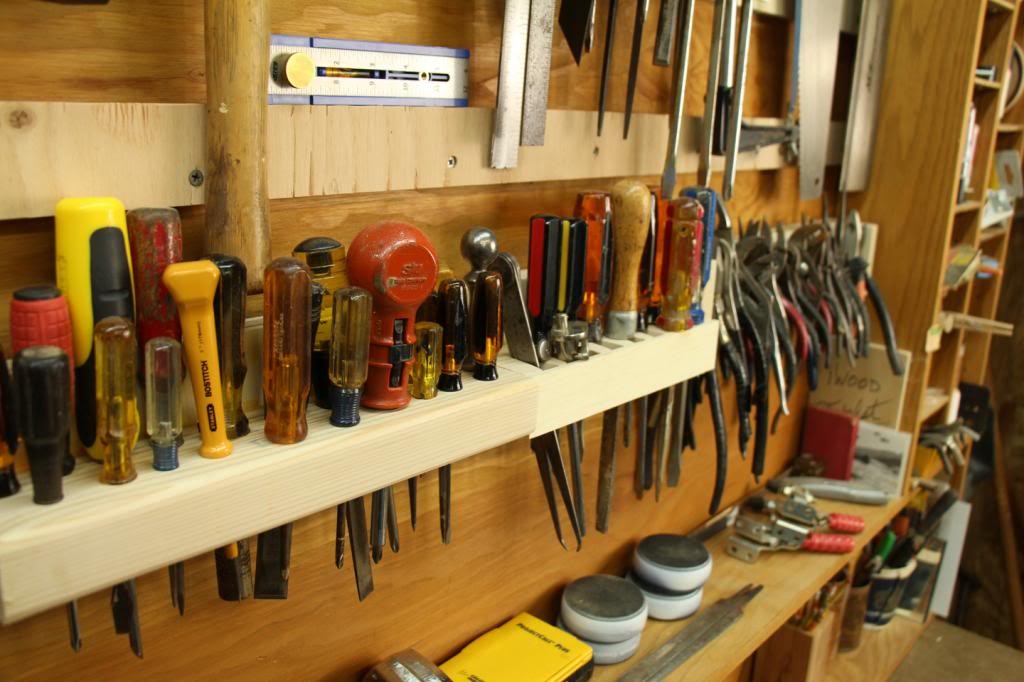Organize your tools
Create a simple tool organizer using a cardboard box or pegboard, sort and label each compartment, and learn safe storage and tool care.



Step-by-step guide to create a simple tool organizer
Best way to organize your toolbox - how to organize tool box
Step 1
Decide if you will build your organizer from the cardboard box or from the pegboard.
Step 2
Bring all the materials to a clean flat workspace so everything is easy to reach.
Step 3
Use the ruler to measure how big each compartment should be on your box or pegboard.
Step 4
Mark each measured spot with a pencil so you know where to cut or place hooks.
Step 5
If you chose the cardboard box cut and fold dividers along your pencil marks to make compartments adult supervision required.
Step 6
If you chose the pegboard push small hooks into the marked holes where you want tools or containers to hang.
Step 7
Secure any cardboard dividers or loose parts with tape or glue so compartments stay strong.
Step 8
Place small containers into the cardboard compartments or hang them on the pegboard hooks for tiny parts.
Step 9
Write clear labels for each compartment with your colouring materials so you know what goes where.
Step 10
Stick each label onto the matching compartment so everything is easy to find.
Step 11
Wipe each tool with a soft cloth to clean off dirt before you store it.
Step 12
Put heavy tools into the lowest labeled compartments so the organizer stays stable.
Step 13
Place small sharp tools into covered containers and then into their labeled spots to keep fingers safe.
Step 14
Gently test your organizer by nudging it to make sure nothing falls or comes loose.
Step 15
Share your finished tool organizer on DIY.org.
Final steps
You're almost there! Complete all the steps, bring your creation to life, post it, and conquer the challenge!


Help!?
What can we use if we don't have a pegboard or small hooks listed in the instructions?
If you don't have a pegboard or small hooks, build the organizer from a sturdy cardboard box with folded dividers and tape or reuse jars and small containers placed into the cardboard compartments as instructed.
My dividers keep falling over or hooks feel loose—how do I fix that?
If cardboard dividers collapse or containers fall out, reinforce seams with extra tape or glue and press firmly after folding, and for a pegboard make sure hooks are pushed fully into the marked holes until the hook base sits flush.
How can I adapt the steps for younger children or older kids helping with the project?
For younger kids skip cutting and use pre-cut dividers, larger containers, and let them label with your colouring materials under supervision, while older kids can use the ruler to measure precise compartments and place small hooks on the pegboard with adult help for cutting.
What are simple ways to personalize or improve the finished tool organizer?
To enhance the organizer, decorate compartments with colouring materials and stickers, add a magnetic strip or labeled covered containers for sharp tools for safer storage, then gently nudge-test again before sharing the finished organizer on DIY.org.
Watch videos on how to create a simple tool organizer
HOW TO MAKE PEGBOARD TOOL ORGANIZER
Facts about tool safety and storage for kids
📦 Corrugated cardboard gets its strength from a wavy ‘fluted’ layer sandwiched between flat liners — strong but lightweight!
🧩 Most pegboards use a 1-inch hole grid so hooks and pegs can be rearranged into lots of useful layouts.
🏷️ Picture labels or color-coded tags help younger kids find and return tools quickly — no reading required!
🔒 Storing sharp tools tip-down or inside covered compartments greatly reduces accidental pokes and keeps curious hands safe.
🧰 Wiping tools clean after use and adding a little oil to metal parts helps prevent rust and makes tools last much longer.
How do I make a simple tool organizer with my child?
What materials do I need to build a child-friendly tool organizer?
What ages is this tool-organizer activity suitable for?
What are the benefits and safety tips for organizing tools with kids?


One subscription, many ways to play and learn.
Only $6.99 after trial. No credit card required



